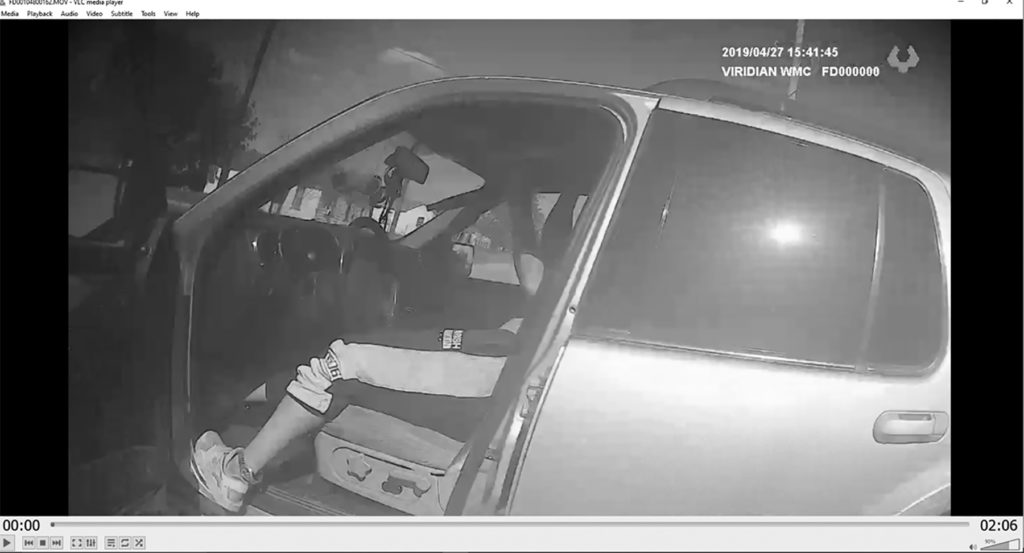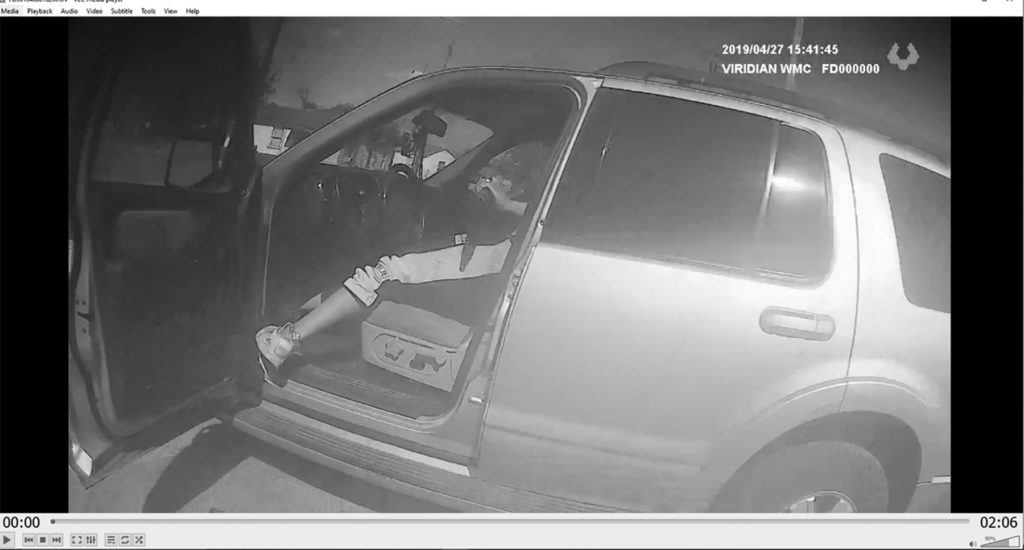By Staley Heatly
46th Judicial District Attorney
In April 2019, a Vernon police officer was responding to a dog bite call when he noticed a man sitting in an SUV in the driveway of a house on the next block. The officer, T.J. Session, knew that police had been by that home on more than one occasion seeking Walter Emiliano Orellana, who was wanted on indictments from Wichita County for continuous sexual abuse of a child. Officer Session called for backup and parked his car in the street in front of the driveway so that it was partially blocking the SUV’s exit. Session walked up to the driver’s side of the SUV and tapped on the window just as his backup was pulling in front of the house.
The next 20 seconds of the encounter, which were captured on Session’s body-worn camera, were a blur of chaos. The officer asked Orellana his name, and he lied, claiming his name was Mark. When Session asked him to step out of the vehicle, Orellana refused and started the engine. Officer Session immediately opened the door and attempted to grab Orellana by the arm, and Orellana put the SUV in reverse and hit the gas. Session was trapped between the SUV and its driver-side door, which could have knocked him down and potentially pushed him under the vehicle. The officer had to take immediate evasive action. He jumped onto the SUV’s running board and grabbed the steering wheel as the vehicle rapidly reversed into the front end of the patrol car. The backs of Session’s calves scraped along the front bumper of his patrol vehicle, and the SUV’s door swung all the way open in the wrong direction when the two vehicles collided. Session narrowly escaped having his legs crushed between them.
While still on the running board and holding onto the steering wheel with one hand, Session drew his weapon and pointed it at Orellana as the SUV cleared his patrol vehicle. Orellana reached toward the passenger-side seat and pulled out a short-barrel shotgun. Then the shooting started. The officer fired multiple shots in a fraction of a second until he was hit in the shoulder with a shotgun blast from Orellana, which caused him to fall backward onto the ground. Officer Session quickly gathered himself and returned fire along with his backup, Officer Brandi Sosa. Orellana was struck eight times during the exchange. EMS arrived on the scene within minutes, and Orellana received immediate, life-saving attention. By the time of trial, he had made a full recovery.
As with most officer-involved cases in a small jurisdiction, the Texas Rangers came in to lead the investigation. The shooting had occurred on Saturday afternoon, and by Monday morning I was meeting with the lead Ranger and reviewing Session’s body-worn camera footage. The footage is harrowing and shows just how quickly an officer can go from a routine interaction to a life-or-death situation. While the body-worn camera footage was clear, there were some key things that it did not show. When Session put both hands together on his weapon to start firing, his hands blocked the view of his chest-mounted camera. The footage did not reveal exactly what he was seeing with his own eyes just before the shooting started—the view was obstructed.
Fortunately, we didn’t have to rely solely on the body-worn camera footage. That’s because Officer Session and all other Vernon Police Department officers had been fitted with weapon-mounted cameras just a few weeks before this shooting. That weapon-mounted camera showed exactly what was in front of the barrel of Session’s gun, and it proved to be a critical piece of evidence at trial.
Weapon-mounted cameras
The Vernon Police Department has long been an early adopter of cutting-edge technology. In July 2012, VPD instituted a body-worn camera program for all patrol officers. That was well before the officer-involved shootings of 2014 that resulted in law enforcement reform advocates clamoring for body-worn cameras from coast to coast. Because of that history, I wasn’t surprised to learn in February 2019 that VPD would be the first law enforcement agency in Texas to implement a weapon-mounted camera program. The camera, manufactured by Viridian Weapon Technologies, sits just below the barrel of the officer’s service weapon. The camera engages as soon as the weapon is drawn from the holster, and it turns off when it is returned to the holster. It records up to six hours of 1080P HD video and audio and includes a 500-lumen LED when lighting conditions are poor. The quality of the video footage is outstanding.
Within two months of deployment, the gun cameras were capturing vital evidence for trial. In one case, an officer had initiated a felony stop on a person who was wanted for a parole violation. The suspect had prior felony convictions, including unlawful possession of a firearm. The officer approached the suspect’s driver-side window with his gun drawn and ordered him out of the car. The gun-camera footage captured the defendant fleeing the stop and almost striking another officer who was standing in front of the defendant’s car. That defendant was convicted by a jury of aggravated assault of a public servant and evading arrest, and he was sentenced to 30 years for aggravated assault and 20 years for evading arrest. The gun-camera footage provided the only clear evidence of the defendant’s near-collision with the officer.
Orellana’s trial
While the case against Orellana was strong, he refused to admit any wrongdoing. We had body-worn camera footage, weapon-mounted camera footage, in-car video, and an officer with 41 pellet wounds to his shoulder from a .20-gauge shotgun blast. Orellana, however, felt completely justified in his actions. In fact, a couple of days after the incident, he told Texas Ranger Jake Weaver that Officer Session had “disrespected him” by putting a gun in his face. Orellana claimed that he had no choice but to shoot the officer in self-defense.
Unsurprisingly, at trial, the defense’s theory of the case was that Orellana had acted in self-defense. They claimed that Orellana pulled his shotgun only after having been shot several times. On direct examination, Officer Session did a good job of walking the jury through the encounter using the video footage and still shots. Session was certain in his testimony that he had fired on Orellana only after Orellana had grabbed the sawed-off shotgun sitting next to him in his SUV.
On cross-examination, the defense offered dozens of still-shot photographs from Session’s body-worn camera. They emphasized the still shots that showed obstructed views of the scene and did not show Orellana with a gun. They then admitted several photos that showed Officer Session firing at Orellana. The defense offered four still shots from the 16:34:55 hour of the body camera footage. None of them showed Orellana reaching for a gun. (One is below.)

The next still shot they showed from 16:34:57 showed shell casings being ejected from Session’s firearm. Only after the officer had fired numerous shots does the body-worn camera come into a position where it clearly shows Orellana with a shotgun aimed at the officer. According to the defense, at that point, Orellana was in a do-or-die situation.
After the defense finished its cross-examination, the court called a recess, and I visited with Session. He was concerned that the defense’s cross-examination made it look like he shot Orellana for no reason, and he was certain that Orellana had grabbed the shotgun before he pulled the trigger on his own weapon.
While I didn’t think that the jury would go for the defensive theory at all, I wanted to put Session’s mind at ease and address any potential concerns that could arise from the defense’s presentation. I quickly pulled up the gun camera footage and went to the 16:34:55 mark. It didn’t take long to see that the defense had left out some still frames from this very second that showed Orellana reaching for something next to him in the seat. When I called Session back to the stand, we pulled up the gun camera video at that spot, and I offered a new still shot into evidence. This shot showed Orellana looking down and reaching for something next to him. (That photo is below.)

I made sure to point out through Session that this still shot was omitted in the defense attorney’s selection of shots from the video’s 16:34:55. Several jurors shook their heads and cast accusatory glances at the defense attorney when they realized that he had tried to play a trick on them.
The overwhelming nature of the evidence meant that the defendant’s self-defense claim went over like a lead balloon. It took the jury less than 20 minutes to come back with a guilty verdict for aggravated assault of a public servant with a deadly weapon.
According to Viridian Weapon Technologies, this was the first trial in the world to offer gun-camera footage in an officer-involved shooting case. While the evidence was potentially strong enough to obtain a conviction without the footage from the gun, there is no doubt that it eliminated any concerns that the jurors may have had about the encounter between Orellana and Officer Session. Viridian created an incredible YouTube video that syncs the gun camera footage with Officer Session’s body camera footage. It is well worth a watch if you are interested in this cutting-edge technology.
Endnote
[1] [1] The footage can be viewed at https://www.youtube.com/watch?v=IqsrWDYZdaU&feature=youtu.be, or search for “Viridian Weapon Tech” to find the video.